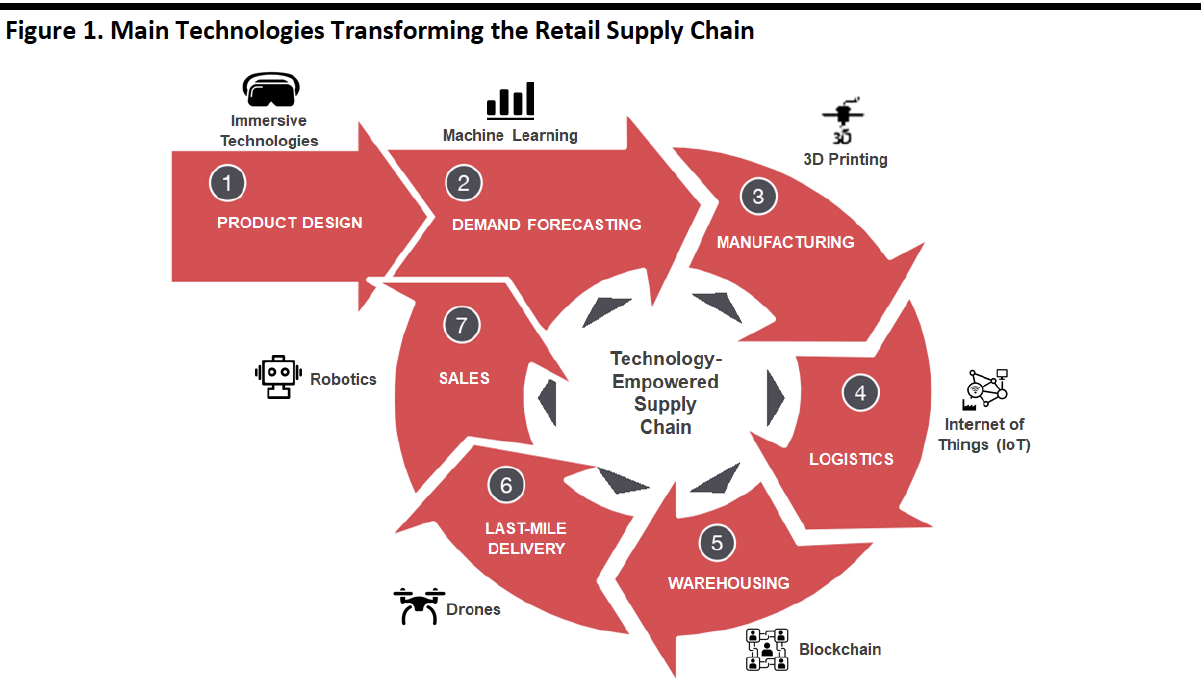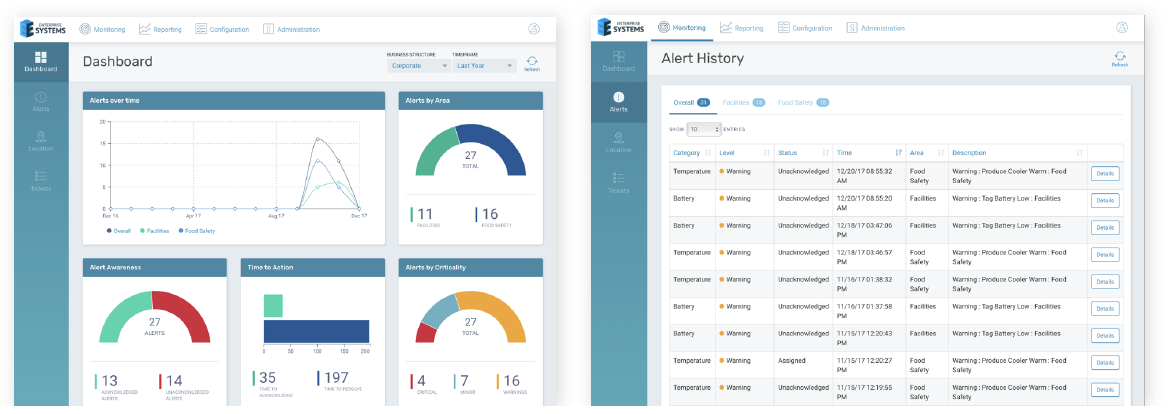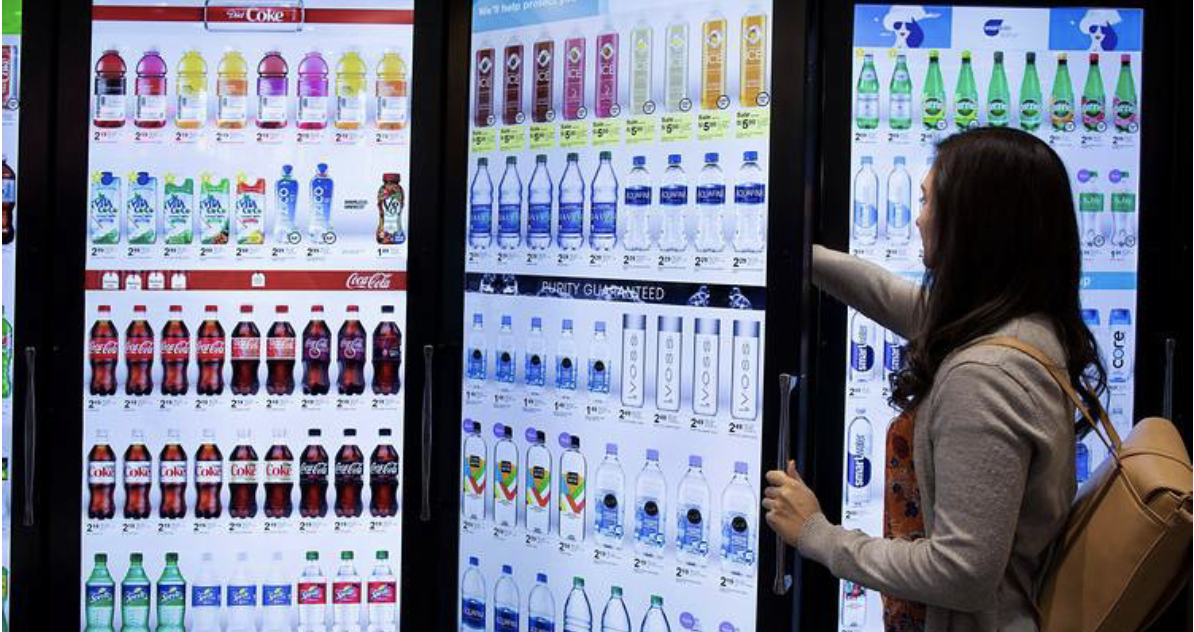
albert Chan
 Source: Coresight Research[/caption]
IoT describes a network of connected devices capable of collecting and sharing data about their status with other objects within and outside the network. Analytics platforms analyze the data flowing through the system to formulate actions for the devices to execute. The structure should normally function with or without (minimal) human intervention.
IoT can help companies track materials and products more quickly and accurately, monitor the quality of goods in real time and achieve higher efficiency through seamless communication. It is estimated that global spending on IoT will grow from over $646 billion in 2018 to $745 billion by the end of 2019, an increase of 15.4% YoY, according to market intelligence company International Data Corporation.
Below, we outline applications of IoT and the benefits the technology offers to retail.
Source: Coresight Research[/caption]
IoT describes a network of connected devices capable of collecting and sharing data about their status with other objects within and outside the network. Analytics platforms analyze the data flowing through the system to formulate actions for the devices to execute. The structure should normally function with or without (minimal) human intervention.
IoT can help companies track materials and products more quickly and accurately, monitor the quality of goods in real time and achieve higher efficiency through seamless communication. It is estimated that global spending on IoT will grow from over $646 billion in 2018 to $745 billion by the end of 2019, an increase of 15.4% YoY, according to market intelligence company International Data Corporation.
Below, we outline applications of IoT and the benefits the technology offers to retail.
IoT Helps Optimize Product Quality and Prevent Wastage
Kroger collaborated with smart digital products company Mission Data to launch IoT online platform OpSense in September 2017. Through connected devices, the platform monitors factors such as temperature and humidity in the store then sends employee alerts through texts, email or phone to prevent product loss or equipment failure, and helps to analyze temperature trends over time through data dashboards, enabling Kroger to streamline operations and reduce product wastage. [caption id="attachment_91803" align="aligncenter" width="700"] Opsense online platform
Opsense online platformSource: Opsense[/caption]
IoT Facilitates Production with Predictive Maintenance
Starbucks announced in May 2019 a partnership with Microsoft to connect coffee machines in stores through the Azure Sphere IoT platform. Azure Sphere will collect data points from the machines, including number of espresso shots pulled, type of beans used, the coffee’s temperature and water quality. The data collected will be streamed back to Microsoft’s cloud platform and securely aggregated to help Starbucks identify problems that may occur in the machines.
Through IoT, Starbucks hopes to shift maintenance to a predictive approach to head off problems before they occur, according to Jeff Wile, Senior Vice President of Retail and Core Technologies for Starbucks Technology.
[caption id="attachment_91804" align="aligncenter" width="700"] Microsoft’s Azure Sphere
Microsoft’s Azure SphereSource: Microsoft[/caption]
IoT Leads to Better Logistics Processes
Cainiao, China-based Alibaba’s delivery arm, announced in January 2019 the launch of China’s first IoT robotic distribution center to be located in Nanjing. At the center, robots empowered with IoT technology can execute the whole fulflment process: control, intelligent recognition and rapid distribution of large parcels, according to Zhong Xiang, an engineer at Cainiao, making the goods sorting processes about 60% faster than with traditional distribution centers.
[caption id="attachment_91805" align="aligncenter" width="705"] Cainiao’s IoT package distribution center in Nanjing
Cainiao’s IoT package distribution center in NanjingSource: Alizila[/caption]
IoT Streamlines Delivery with Accuracy
Online grocery retailer Ocado optimizes its delivery process by equipping delivery vans with a range of IoT sensors. The system logs information such as vehicle location, wheel speed, fuel consumption and cornering speed. The delivery vans stream the collected data in real-time to Ocado’s customer fulfillment centers. Ocado engineers then feed the data into the company’s routing system, helping the company determine a better route for future deliveries.
[caption id="attachment_91806" align="aligncenter" width="700"] Ocado’s delivery vans
Ocado’s delivery vansSource: Ocado[/caption]
IoT Enhances Customers’ Shopping Experience
Walgreens Boots Alliance is testing an IoT-enabled technology that embeds cameras, sensors and digital screens in the cooler doors in its stores. Cameras and sensors inside the cooler doors connected to face-detection technology can sense the likely age of an approaching shopper, determine which items shoppers picked up or looked at and display targeted ads.
[caption id="attachment_91807" align="aligncenter" width="700"] Walgreens’ digital cooler doors
Walgreens’ digital cooler doorsSource: Cooler Screens[/caption]
Key Insights and Implications for Retailers
IoT can improve supply chain operations by controlling the quality of goods, making predictive maintenance possible, the logistics processes more efficient and deliveries more accurate. Retailers such as Alibaba and Kroger have been employing IoT solutions to improve supply chain efficiency: With further advancements and lower cost, we expect to see wider adoption in the coming years.